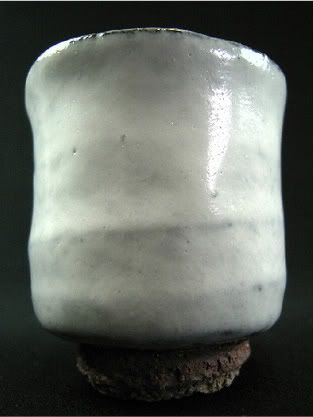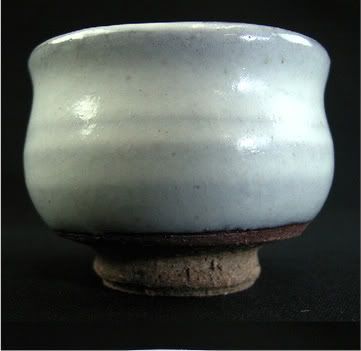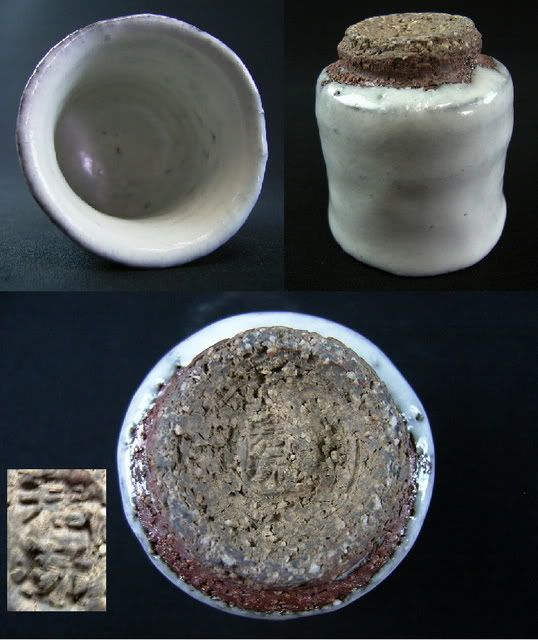Jayaratna wrote:Maybe this is a stupid question: does hagiyaki have anything to do with shinoyaki?
If not, what's the difference?
-yaki refers to something that is fired or baked ... it can be translated as "ware" here, so you can also say Hagi ware and Shino ware.
Both are high-fired pottery. To quote the Japanese pottery website
e-yakimono.net, Hagi ware is associated with Yamaguchi Prefecture. It's a glazed, high-fired stoneware, "a style especially famous for its milky, white-glazed teaware." This particular style originated with Korean potters. Substyles include
Hagi-oni or "ogre Hagi," which has a super-thick white glaze with a distinctive crawl:


There is also an
ao-hagi or "blue hagi" glaze that the potter Seigan Yamane is very famous for:
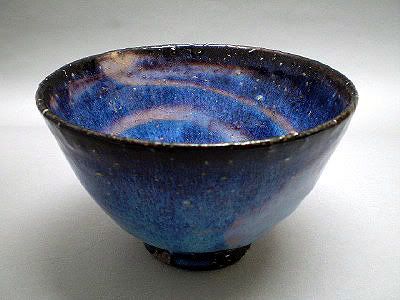
Hagi typically is a plain style and rarely includes any pictured designs. Where teabowls (chawan) are concerned, it's often associated with the V-shaped Ido style, which also originated in Korea.
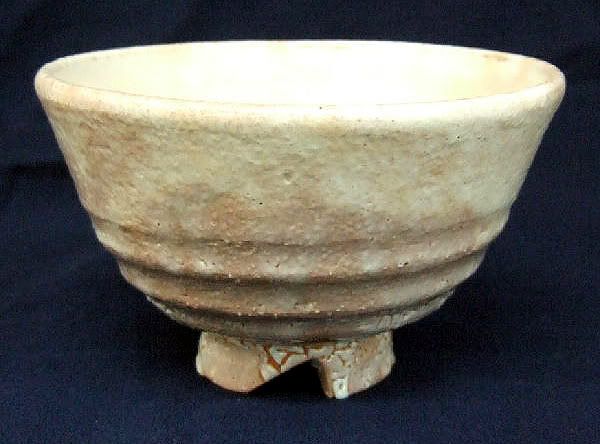
Shino ware is a subset of Mino ware - high-fired wares produced in the Seto and Mino areas of Gifu Prefecture, and which originated in the late 16th century. Shino was Japan's first high-fired white-glazed pottery with iron-oxide brush markings; most decoration on pottery up until that time had been carved, incised or appliqued. One distinctive characteristic of Shino is small pinholes called
suana (nest holes), which tea masters favor and term
yuzuhada, or citron skin. (It does really look and feel a bit like orange peel!)

Shino ware often uses milky-white ash/feldspar glaze. Shino substyles include the following:
- e-Shino (decorated, or "pictured" ware)
- iron-oxide designs applied under shino glaze)
- muji Shino (plain white)
- aka-Shino and beni-Shino (red)
- nezumi Shino (grey or "mouse-colored")
- designs carved into iron slip; piece covered by Shino glaze.
When a Shino piece incorporates a design, it is usually a fairly simple one. Shino teabowls are often comparatively short and wide:


...although not always!
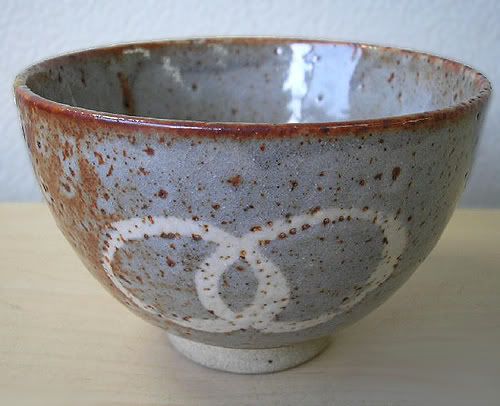
The best way to appreciate the difference is to touch and look at both types of pottery in person. The second-best way is to look at photos.
e-Yakimono's Hagi page
e-Yakimon's Shino page
P.S. Not sure how much I can/should generalize about this, but in my experience, the clay used in most Shino ware is comparatively smooth (and pale), whereas the underlying clay in many Hagi chawan-s often has a rough texture (and is often dark and/or reddish). Of course, that's a huge generalization; I've seen smooth, pale clay used in Hagiyaki too!
